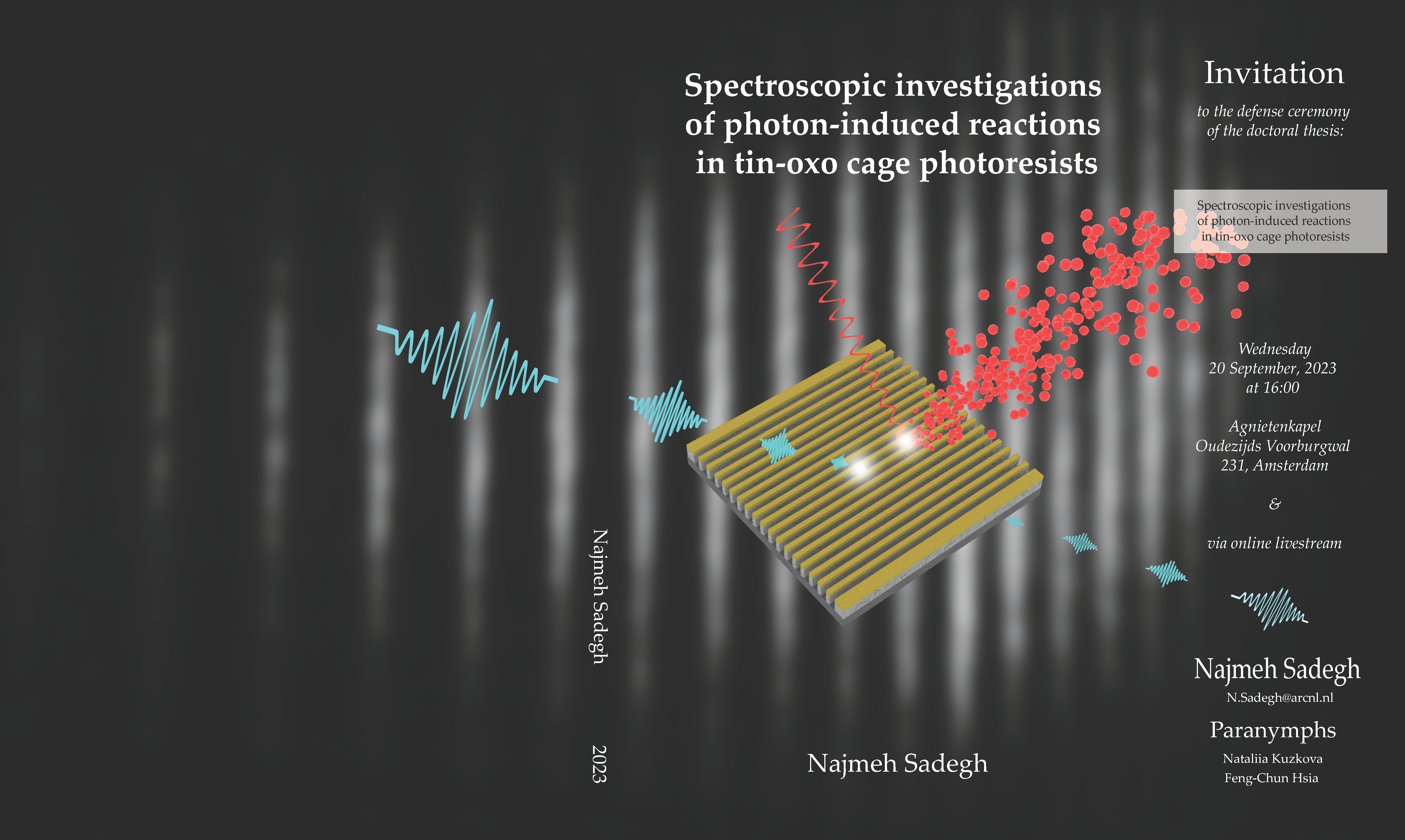Spectroscopic investigations of photon-induced reactions in tin-oxo cage photoresists
Molecular compounds such as tin-oxo cages are promising photoresists for Extreme UltraViolet (EUV) photolithography, which is the latest nano-patterning technology for high-end computer chips. Solubility switching of the resist is the key for pattern transfer to the semiconductor substrate. In this thesis, different spectroscopic techniques were used to gain insight into the photochemistry upon exposure, which is crucial for optimizing the resist performance.
In one research line, we developed a laser-based high harmonic generation setup as the exposure source in the soft-X-ray (XUV) region to perform broadband absorption spectroscopy on tin-oxo cage samples. Resist-coated thin films were exposed to light with energies of 21 – 70 eV, and the induced changes in the transmission as a function of exposure dose were used to quantify the photoconversion of the resist. The results were compared with those obtained with EUV (92 eV).
The resist properties were further investigated using X-ray photoelectron spectroscopy and Total Electron Yield techniques. A synchrotron beamline was used as the exposure source (5-150 eV) to study the low-energy emitted electrons from the resist.
Outgassing measurements (residual gas analysis) and ellipsometry techniques were used to investigate the resist’s photoconversion under 92 eV exposure. Outgassing species from the resist were determined to be mainly organic carbon-containing products. The outgassing rate was measured for a few selected masses and the induced resist’s thickness change at different exposure doses was related to the outgassing rate of the resist.
The fundamental insight obtained in our studies can help to design improved EUV photoresists.









